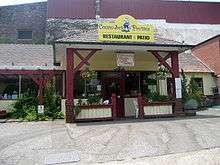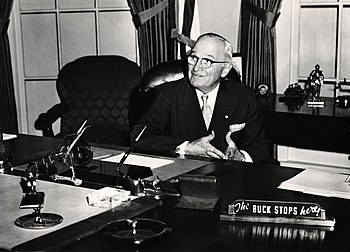Cornish Americans
Cornish Americans (Cornish: Kernowyon yn Amerika) are Americans who describe themselves as having Cornish ancestry, an ethnic group of Brittonic Celts native to Cornwall and the Scilly Isles in the United Kingdom.
| Total population | |
|---|---|
| 2 million | |
| Regions with significant populations | |
| Languages | |
| English (American English dialects) Cornish | |
| Related ethnic groups | |
| Cornish, English Americans, Welsh Americans, Breton Americans, Manx Americans, Scottish Americans, Scotch-Irish Americans, Irish Americans |
Cornish surnames and personal names remain common, and are often distinct from Irish, Scottish and Welsh names, although there is a similarity to Welsh and Breton names in many instances. Similarly, the majority of place names in Cornwall are still Brittonic. The Cornish language had died out as a primary spoken language by the end of the 18th century, but a revival of the tongue has been ongoing since the early 20th century.
Cornish ancestry is not recognized on the United States Census. There are estimated to be close to 2 million people of Cornish descent in the U.S which is close to four times the present population of Cornwall in the United Kingdom which stands at approximately 550,000[1], although people of Cornish ancestry also live in other parts of England, Wales, Scotland and Northern Ireland thus the population of Cornwall should not be conflated with the total Cornish population of the United Kingdom.
Cornish emigration to the United States
Tangier Island is an island in lower Chesapeake Bay in Virginia: some inhabitants have a West Country accent that traces back to the settlers (including the Cornish) who arrived there in the 1600s.[2]
The coincidence of the decline of the mining industry in Cornwall in the 19th century and the discovery of large amounts of mineral deposits abroad meant that Cornish families headed overseas for work. Each decade between 1861 and 1901, a fifth of the entire Cornish male population migrated abroad – three times the average for England and Wales. In total, the county lost over a quarter of a million people between 1841 and 1901.[3]
Large numbers of Cornish people moved to the United States, and while some stayed in New York City and other East Coast ports after arriving, many moved inland to mining areas in California, Wisconsin, Pennsylvania and Michigan. One such area was Mineral Point, Wisconsin, in which the largest group of immigrants were Cornish miners attracted to the lead mining opportunities, and by 1845 roughly half of the town's population had Cornish ancestry.[4] Today the Cornish town of Redruth is twinned with Mineral Point.
Cornish culture in the United States

Mineral Point, Wisconsin serves Cornish food, such as pasties and figgyhobbin,[5] and Cornish pasties are sold at ex-Cornish mining towns in America, especially in Butte, Montana[6] and the Upper Peninsula of Michigan.
In California, statues and monuments in many towns pay tribute to the influence of the Cornish on their development.[7] In the city of Grass Valley, the tradition of singing Cornish carols lives on and one local historian of the area says the songs have become "the identity of the town". Some of the members of today's Cornish Carol Choir are in fact descendants of the original Cornish gold miners. The city holds St Piran's Day celebrations every year, which along with carol singing, includes a flag raising ceremony, games involving the Cornish pasty, and Cornish wrestling competitions.[8] The city is twinned with Bodmin in Cornwall.
Cornish culture continues to have an influence in the Copper Country of northern Michigan, the Iron Ranges of northern Michigan, Wisconsin and Minnesota, and Butte, Montana.[6]
Cornish immigrant miners are depicted in the TV series Deadwood, speaking their native language, even though Cornish had died out in the 18th century before a revival in the 20th century; the actors in the relevant scenes are, in fact, speaking Irish, a fellow Celtic language, but not mutually intelligible as Irish/Gaelic is from a different branch of the Celtic languages, whereas Cornish being much closer to, and a part of the same branch, as the still thriving Welsh and Breton, and the now extinct Brittonic languages of Great Britain such as Cumbric and Pictish.[9]
Legends of the Fall, a novella by American author Jim Harrison, detailing the lives of a Cornish American family in the early 20th century, contains several Cornish language terms. These were also included in the Academy Award-winning film of the same name starring Anthony Hopkins as Col. William Ludlow and Brad Pitt as Tristan Ludlow.[10]
The fictional character Conan the Barbarian is not depicted as Cornish, however the name Conan is a Brittonic Cornish name.
Notable people
| Lists of Americans |
|---|
| By U.S. state |
| By ethnicity or nationality |
|
|
|
|
|
|
|
|
|

Several notable Americans were either born in Cornwall or have family connections to the county.
- Mark Twain - Samuel Langhorne Clemens (November 30, 1835 – April 21, 1910), better known by his pen name Mark Twain, was an American author and humorist. He is noted for his novels Adventures of Huckleberry Finn (1885), called "the Great American Novel", and The Adventures of Tom Sawyer (1876). The Clemens family originally came from Looe, Cornwall.[11]
- Richard Bullock - became a legendary figure of the Wild West cowboy era. His quick-shooting deeds working on the Deadwood stage gained him the nickname "Deadwood Dick".
- Colin Trevorrow - an American film director and screenwriter. The surname Trevorrow originating in the village of Ludgvan near Penzance.[12]
- Jayne Mansfield - an American actress working both on Broadway and in Hollywood. Her ancestors moved from Cornwall to Pen Argyl to work slate.[13] Her daughter is the actress Mariska Hargitay.
- Michael J. Fox - Canadian–American actor, author, comedian, producer, activist and voice-over artist.
- Edie Falco - an American television, film and stage actress. Her ancestor was a Cornish master mariner, from Penzance.[14][15]
- Dirk Kempthorne - United States Secretary of the Interior, Governor of Idaho, United States Senator representing Idaho, and Mayor of Boise, who has immigrant ancestors from Cornwall.[16]
- Rick Rescorla - a retired United States Army officer of Cornish birth who served with distinction in Rhodesia as a British soldier and the Vietnam War as an American officer. Rescorla was World Trade Center security chief for the financial services firm Morgan Stanley, and died in the attacks of September 11, 2001, while leading the evacuation efforts.
- John Spargo - a Cornish-born American socialist writer and muckraker.
- Randy Travis - American country singer, born Randy Bruce Traywick, descended from one Robarde Traweek, who was born in 1668 in Cornwall. Robarde's son Robert was born in 1700 in Stafford County, Virginia and died in 1788 in Onslow County, North Carolina, establishing the North Carolinian roots of the Traywick family.
- John Johns Trigg - Virginian congressman and American Revolutionary War officer was of mostly Cornish ancestry, his ancestors having immigrated to the American colonies from Cornwall in the mid-17th century.
- William Williams - a Cornish immigrant to Saint Paul, Minnesota who was convicted of the 1905 murders of his homosexual lover and the latter's mother. His hanging was botched and Williams remains the last person executed by the State of Minnesota.
- Natasha Trethewey - an American Pulitzer Prize-winning poet[17] who was made United States Poet Laureate and also Poet Laureate of Mississippi in 2012. Her father, Eric Trethewey, is also a poet and professor of English at Hollins University.[18] Trethewey is a Cornish language-derived surname.[19]
- Elizabeth Arden - Florence Nightingale Graham (December 31, 1884 – October 18, 1966), who went by the business name Elizabeth Arden, was a Canadian-American businesswoman who built a cosmetics empire in the United States. At the peak of her career, she was one of the wealthiest women in the world. Her mother was Cornish, her father Scottish, having met in Cornwall.[20]
- Harry S. Truman - Truman, the 33rd President of the United States (1945–1953), may have been a descendant of the Cornish Tremayne family although he himself disliked this theory, preferring an Anglo-Saxon origin. The President said that he believed the "Tremaine thing is a lot of bunk" but conceded, "Maybe I'm wrong. Anyway as I've told you so long as we don't find Captain Kidd, Morgan the Pirate or J.P. [Morgan] either, for that matter, in 'the line' I'm satisfied."[21]
- Rutherford B. Hayes - the 19th President of the United States (1877–1881), was descended from Thomas Burgess, an emigrant from Truro, Cornwall, to Salem, Massachusetts in the 17th Century.[22]
- Franklin D. Roosevelt - the 32nd President of the United States (1933–1945), was, like Hayes, a descendant of Thomas Burgess, whose grandmother happened to be a Trethewey.[23]
- Donald Bertrand Tresidder was the fourth president of Stanford University, serving from 1943 until his sudden death in 1948. He also had a longtime association with Yosemite National Park.
See also
- Celtic Britons
- Cornish language
- Cornish emigration
- Cornish Australians
- Mining in Cornwall and Devon
- Celtic music in the United States
- List of people from Cornwall
- British American
- Scottish American
- Scots-Irish American
- Welsh American
- Breton American
- Dumnonia
- Kernow
- Maps of American ancestries
References
- Council, Cornwall. "Population - Cornwall Council". www.cornwall.gov.uk. Retrieved August 2, 2020.
- "迷わないメル友選び". Gotangierisland.com. Retrieved March 17, 2015.
- "BBC - Legacies - Immigration and Emigration - England - Cornwall - I'm alright Jack - Article Page 1". www.bbc.co.uk. Retrieved August 2, 2020.
- Nesbit, Robert C. (1989). Wisconsin: A History. Madison, Wisconsin: University of Wisconsin Press. ISBN 0-299-10804-X.
- "Shops & Restaurants - Pendarvis". Pendarvis.wisconsinhistory.org. Archived from the original on October 25, 2012. Retrieved March 17, 2015.
- "The Butte Pasty - The Foods of the World Forum". Foodsoftheworld.activeboards.net. Retrieved July 30, 2016.
- "Missing - Thebannerofpiran". Archive.is. June 28, 2007. Archived from the original on June 28, 2007. Retrieved January 9, 2018.
- "Archived copy". Archived from the original on February 16, 2009. Retrieved September 24, 2012.CS1 maint: archived copy as title (link)
- "Archived copy". Archived from the original on August 14, 2011. Retrieved April 26, 2011.CS1 maint: archived copy as title (link)
- "The Celtic Languages in Contact". Books.google.com. p. 204. Retrieved March 17, 2015.
- Payton, Philip. The Cornish Overseas, 2005.
- "Trevorrow Name Meaning & Trevorrow Family History at Ancestry.co.uk". www.ancestry.co.uk. Retrieved December 20, 2017.
- Kent, Alan M. Cousin Jack's Mouth Organ: Travels in Cornish America, 2004
- Eastman, Dick (April 8, 2012). "Last Friday's Who Do You Think You Are? with Edie Falco". Eastman's Online Genealogy Newsletter. Archived from the original on October 14, 2013. Retrieved October 13, 2013.
- "Edie Falco, Who Do You Think You Are?". Edie Falco, Who Do You Think You Are?. Retrieved July 26, 2013.
- Butler, Gillian; John Butler; Ren Kempthorne (2000). Karanza Whelas Karanza, The Story of the Kempthornes, 1300-2000.
- Trethewey, Natasha (2007). Native Guard. New York, USA: Houghton Mifflin Harcourt. ISBN 0-618-60463-4.
- "Photos from the May 8, 2007 celebration to honor Natasha Trethewey for her Pulitzer Prize-winning collection of poetry, Native Guard". The Creative Writing Program at Emory University. Emory University. Archived from the original on August 14, 2011. Retrieved June 18, 2011.
- "Cornish Surnames - extensive A-Z list". Ancestry.com. Retrieved June 18, 2011.
- Sawyers, June Skinner Famous Firsts of Scottish-Americans Pelican Publishing, 1996; p. 11
- "ROOTED IN HISTORY: The Genealogy of Harry S. Truman". Truman Library. Retrieved July 30, 2016.
- Ancestors of American Presidents, Gary Boyd Roberts, Published by Carl Boyer III, 1995, Santa Clara CA, p44
- Ancestors of American Presidents, Gary Boyd Roberts, Published by Carl Boyer III, 1995, Santa Clara CA, p275
Further reading
- Cornish, Joseph H. The History and Genealogy of the Cornish Families in America. Higginson Book Company. 2003. ASIN: B0006S85H6.
- Ewart, Shirley. Highly Respectable Families: the Cornish of Grass Valley, California 1854-1954 (Nevada County Pioneers Series). Comstock Bonanza Press. October 1998. ISBN 978-0-933994-18-8.
- Magnaghi, Russell M. Cornish in Michigan (Discovering the Peoples of Michigan Series). Michigan State University Press. October 2007. ISBN 978-0-87013-787-7.
- Payton, Philip The Cornish Overseas. Cornwall Editions Limited. April 2005. ISBN 978-1-904880-04-2.
- Rowse, A. L. The Cornish in America. Redruth: Dyllansow Truran. June 1991. ISBN 978-1-85022-059-6.
- Todd, Arthur C. The Cornish Miner in America: the Contribution to the Mining History of the United States by Emigrant Cornish Miners: the Men Called Cousin Jacks. Arthur H. Clark (publisher). September 1995. ISBN 978-0-87062-238-0.
- White, Helen M. Cornish Cousins of Minnesota, Lost and Found: St. Piran's Society of Minnesota. Minnesota Heritage Publications. 1997. ASIN: B0006QP60M.
